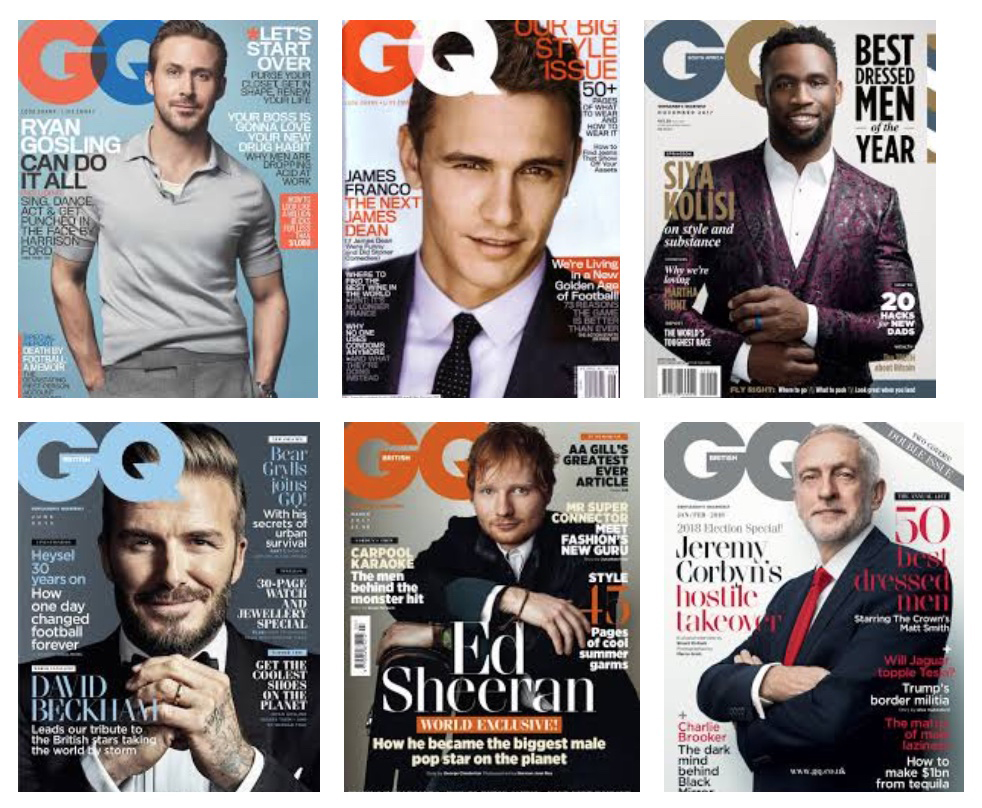 It’s a look, and it’s made GQ almost unmistakable from any other men’s magazine out there. It’s the front-facing, straight-into-the-eyes stare of the cover personality – whether they are male models, comedians or any other type of assorted celebrity.
It’s a look, and it’s made GQ almost unmistakable from any other men’s magazine out there. It’s the front-facing, straight-into-the-eyes stare of the cover personality – whether they are male models, comedians or any other type of assorted celebrity.
Now, the iconic men’s brand is leveraging its powerful presence in print with some truly innovative supplemental revenue streams.
“Each individual brand’s task is to take a look at what is that business model; what is that business plan; and how do you create ancillary revenue streams around what the core is,” said GQ’s general manager Rob Dechiaro in a recent interview with Samir “Mr. Magazine” Husni.
“And if it’s Vogue, what do you build around that to help some of the challenges that you’re seeing in print. But it’s not to go away from print, it’s to fortify it,” Dechiaro continued.
Most of that fortification plan for the GQ is strongly centered on their brand promise to help men dress better.
“From the success of their editorially-driven ‘Best Stuff Box,’ to their latest endeavor to utilize the brand’s expertise when it comes to helping guys dress, a product recommendation site they’ve added to their e-commerce called ‘GQ Recommends,’ the brand is moving forward confidently in its plans to monetise its digital platforms in more ways than just a paywall,” according to Husni.
He interviewed for Dechiaro and Jon Wilde, the brand’s executive digital director, about how they are developing new revenue streams “and new ways to delight and surprise their audience.”
And according to Wilde, that begins with being somewhat platform agnostic.
“So, it isn’t that one thing exists here and one thing exists there, it’s how does something that we’re really excited about exist everywhere, but in a time and space and way that is particular to that platform,” Wilde explained.
“The content is strong enough to resonate across all platforms,” Dechiaro added. “I think it’s our job to make sure that it connects with that audience in the most natural way, based on that platform because the content is just that good and it should be able to span all of those audiences to anybody who cares about GQ.”
As for the future of print, Wilde asserts that will vary tremendously by brand.
“You can’t treat brands as if they’re all one in the same,” he explains. “The New Yorker; the print version of that defines the thing. It’s carrying it around with you; it’s getting the tote bag; it’s sitting it on your coffee table. That’s a reading experience that I don’t think anyone plans on giving up anytime soon.”
On the other hand, for a title life Self, Wilde sees that being a more natural transition to a digitally native format.
“The crowd that they’re talking to; the audience that they have; where they live and what they’re looking for in that information, they made a decision which made a lot of sense for them. It’s intriguing watching them really push into Snapchat,” he explains.
For the GQ brand, the sweet spot lies firmly in the hands of the audience.
“If you look at our audience, where are they consuming content and how do we find them and engage them, then we can talk about monetization,” Dechiaro explained. “We have to make sure that we’re delivering that content, and that experience of GQ, in all of those places, on all of those platforms. Then we can determine the best way to monetize.”
At the end of the day, it’s about staying true to the brand experience, that iconic image that comes to mind when someone says “GQ.”

February 28, 2018, 8:47 am